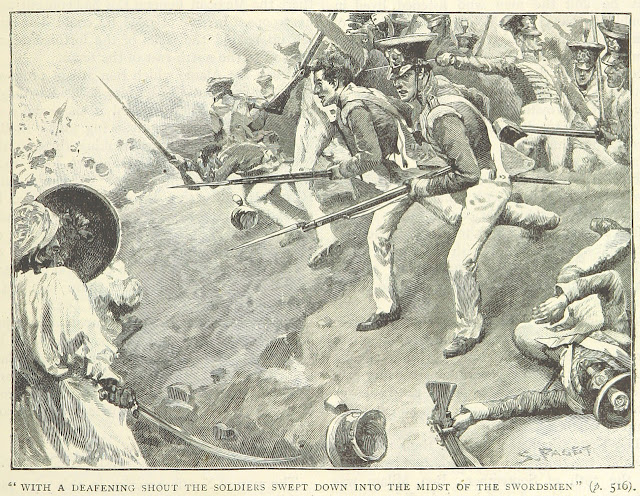The Battle of Hyderabad (1843): A Decisive Clash Between the British East India Company and the Talpur Mirs of Sindh
The Battle of Hyderabad, fought on 24th March 1843, was a significant military campaign that took place near Hyderabad, Sindh (now in Pakistan). It pitted the forces of the British East India Company against the Talpur Mirs of Sindh, led by Mir Sher Muhammad Khan Talpur and Hosh Mohammad Sheedi. The British, commanded by Sir Charles Napier and Captain James Outram, emerged victorious, marking a crucial turning point in their control over the Sindh region. This article provides an overview of the conflict, its historical context, and the impact it had on British colonial rule in the area.
Historical Background: The British East India Company's involvement in Sindh began with a treaty of friendship signed in 1809 between the Amirs of Sindh and the British. Over time, the British influence grew, and in 1838, they established a political residency in Hyderabad, further solidifying their presence in the region. However, tensions escalated when the British interfered in the internal affairs of the Amirs and sought their assistance in supporting Shah Shujah Durrani's claim to the throne in Afghanistan. The Amirs, favoring the Shah of Persia, resisted British demands, leading to a deteriorating relationship between the two sides.
Arrival of Charles Napier: In 1841, Charles Napier, a seasoned military officer, was appointed to serve in India and arrived in the Sindh in 1842. Napier's arrival coincided with increased British control and a desire to expand their dominion. Unlike his predecessor, Captain James Outram, Napier adopted a more authoritarian approach, aiming for complete British control over the region. Upon his arrival, Napier was tasked with investigating the alleged duplicity of the Amirs and compiling a report for Lord Ellenborough, the Governor-General of India.
Tensions Escalate: Amidst growing distrust, Napier ordered the removal of Talpur troops from Hyderabad Fort, a move that escalated tensions with the Amirs. Eventually, Napier took control of the fort and held Amir Sodbar as a prisoner against his will. Ellenborough supported Napier's actions and initiated the confiscation of wealth from the Amirs' residences, further aggravating the situation.
The Battle: On 24th March 1843, British forces, led by Sir Charles Napier, marched out from Hyderabad to confront Sher Muhammad's army. The Talpur troops were well-entrenched, and the terrain made it challenging for Napier to gauge the strength of their lines. After fierce fighting, the British managed to break through a weak spot in the Talpur lines, causing them to collapse. Sher Muhammad left the battlefield, leaving his commander Hosh Mohammad Sheedi to fight to the death. The disorganized Talpur troops fled, but Napier's strategic maneuver prevented them from regrouping and posing a threat to the British.
Aftermath and Controversy: Following the British victory, Captain James Outram advocated for the restoration of power to the Amirs in England, leading to criticism of Ellenborough and Napier. The British government was initially inclined to return Sindh to the Amirs, but due to the difficulties involved and fear of further backlash, they retained control over the province. The battle's aftermath saw limited economic benefits for the British, as Sindh proved less prosperous than anticipated.
Conclusion: The Battle of Hyderabad in 1843 marked a crucial turning point in British control over Sindh. The victory solidified British authority in the region, paving the way for continued colonial rule. The conflict highlighted the power struggles between the Amirs of Sindh and the expanding British Empire. The Battle of Hyderabad remains an essential event in the history of the Indian subcontinent, illustrating the British East India Company's determination to assert control and the resistance it encountered in the process.
References:
Belchem, J. (2010). The Company and the Shikarpoor-Amir War, 1838-1843. In The British and the Grand Trunk: A Historical Perspective on the Shikarpur-Amir War, 1838-1843 (pp. 57-83). The University of Edinburgh.
Gilmartin, D. (2011). Empire and Islam: Punjab and the Making of Pakistan. University of California Press.
Talbot, I. (2016). The Deadly Commerce: Opium and the Rise of Organized Crime in Sindh, 1843–1947. Modern Asian Studies, 50(3), 1112-1139.
 Reviewed by Balochistan History
on
June 07, 2023
Rating:
Reviewed by Balochistan History
on
June 07, 2023
Rating:














No comments